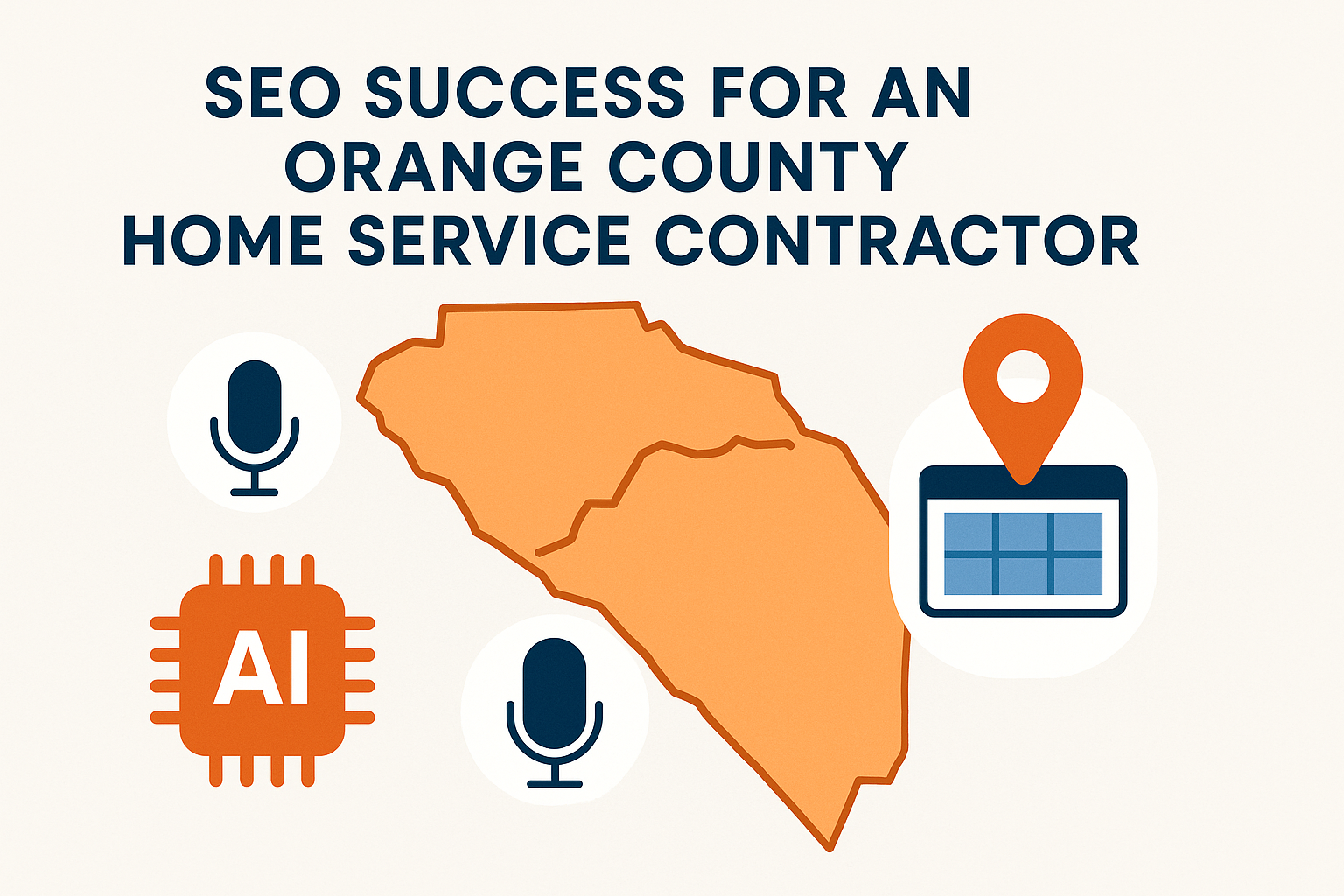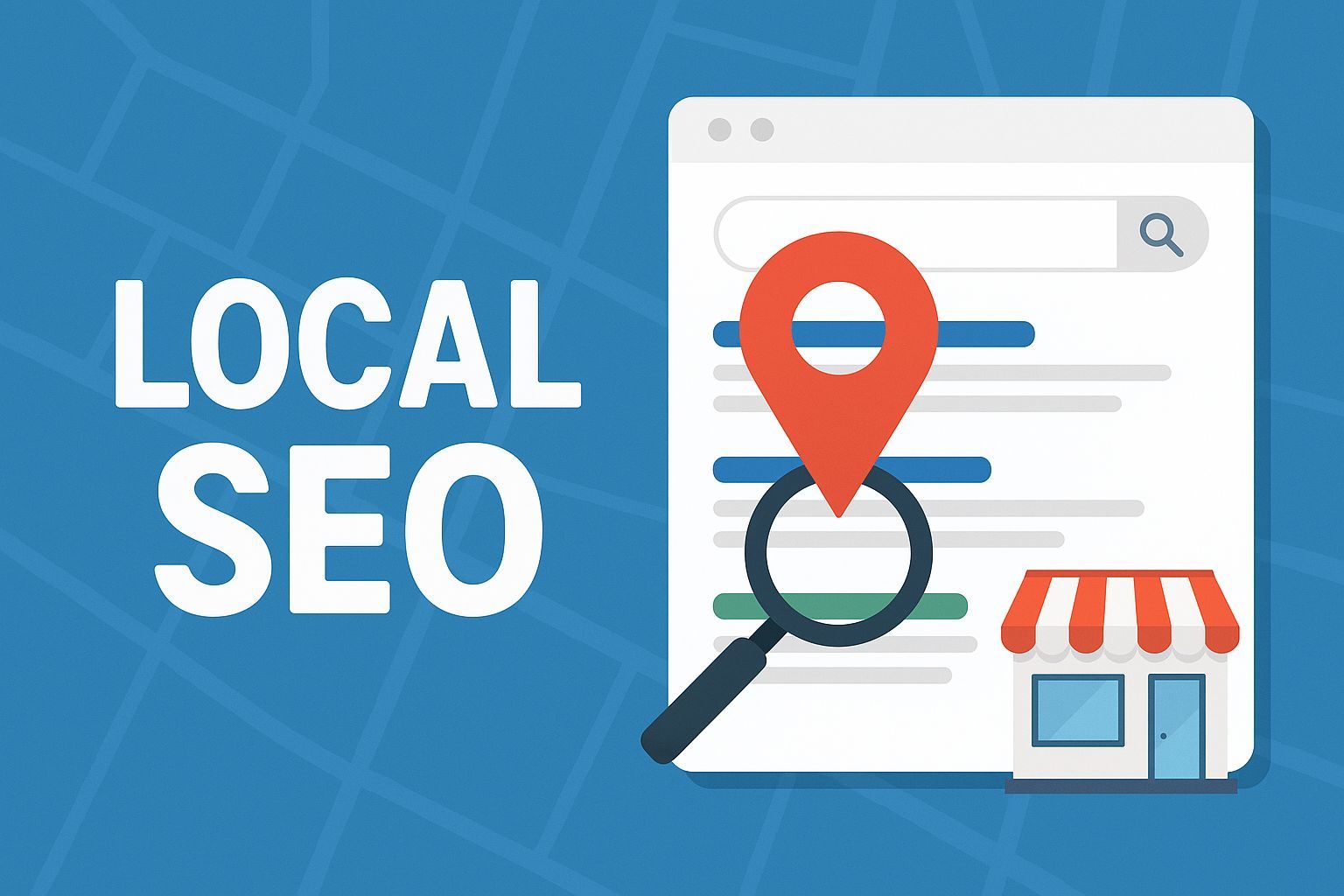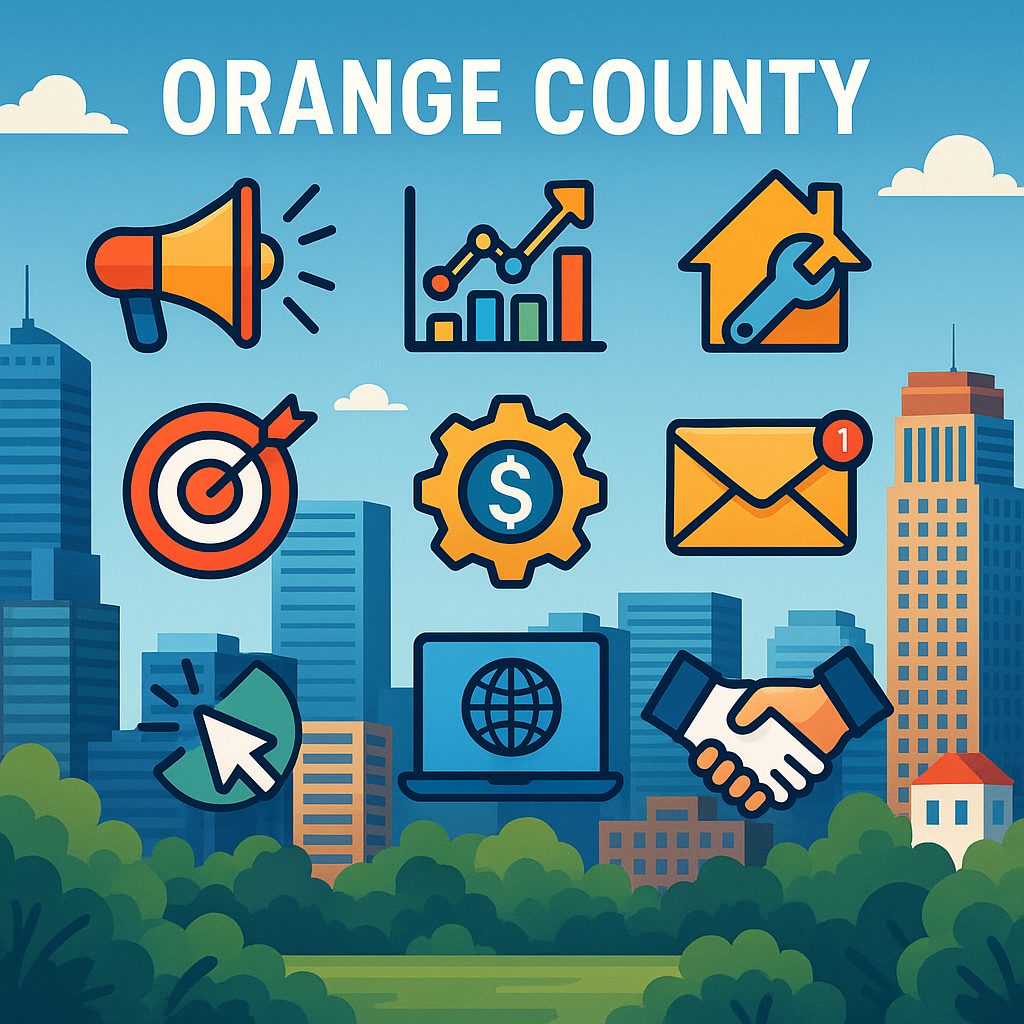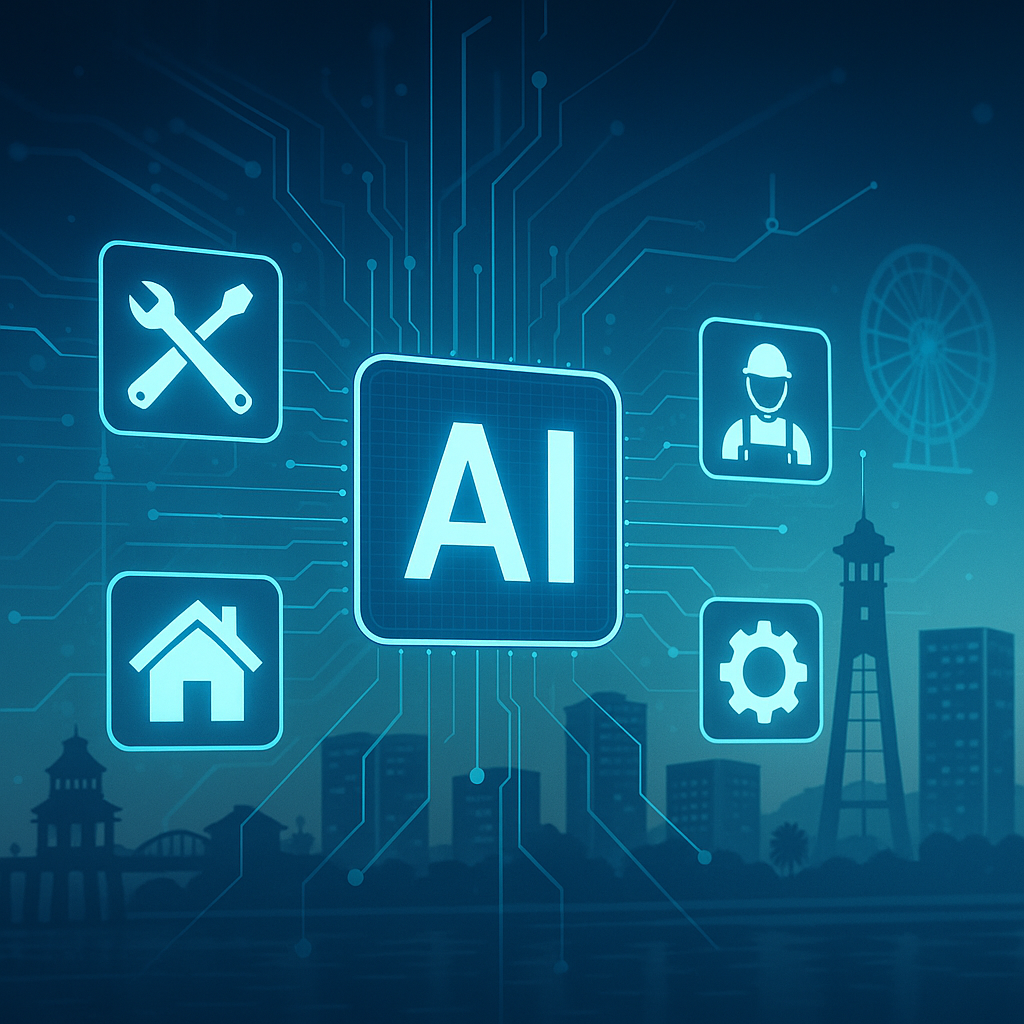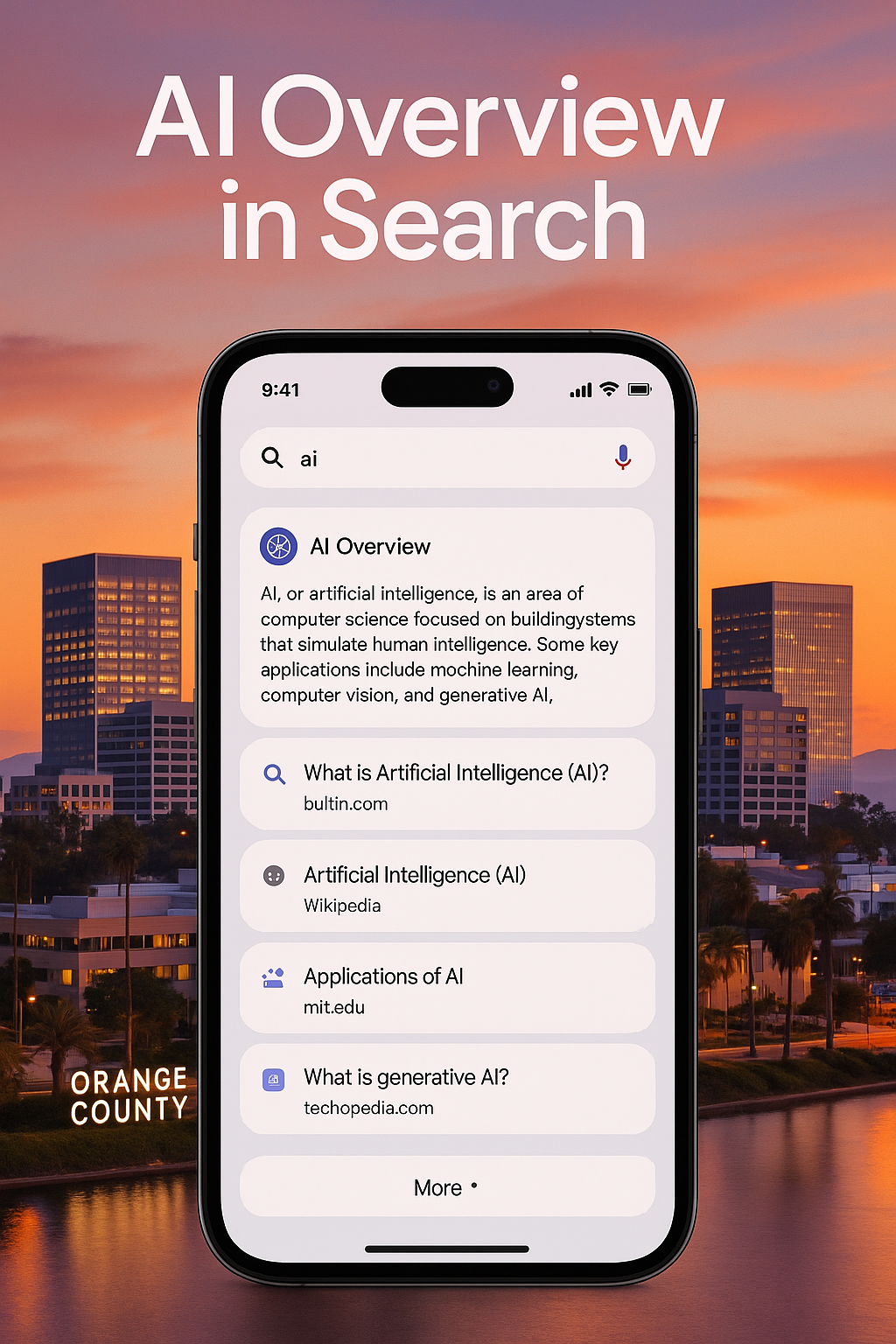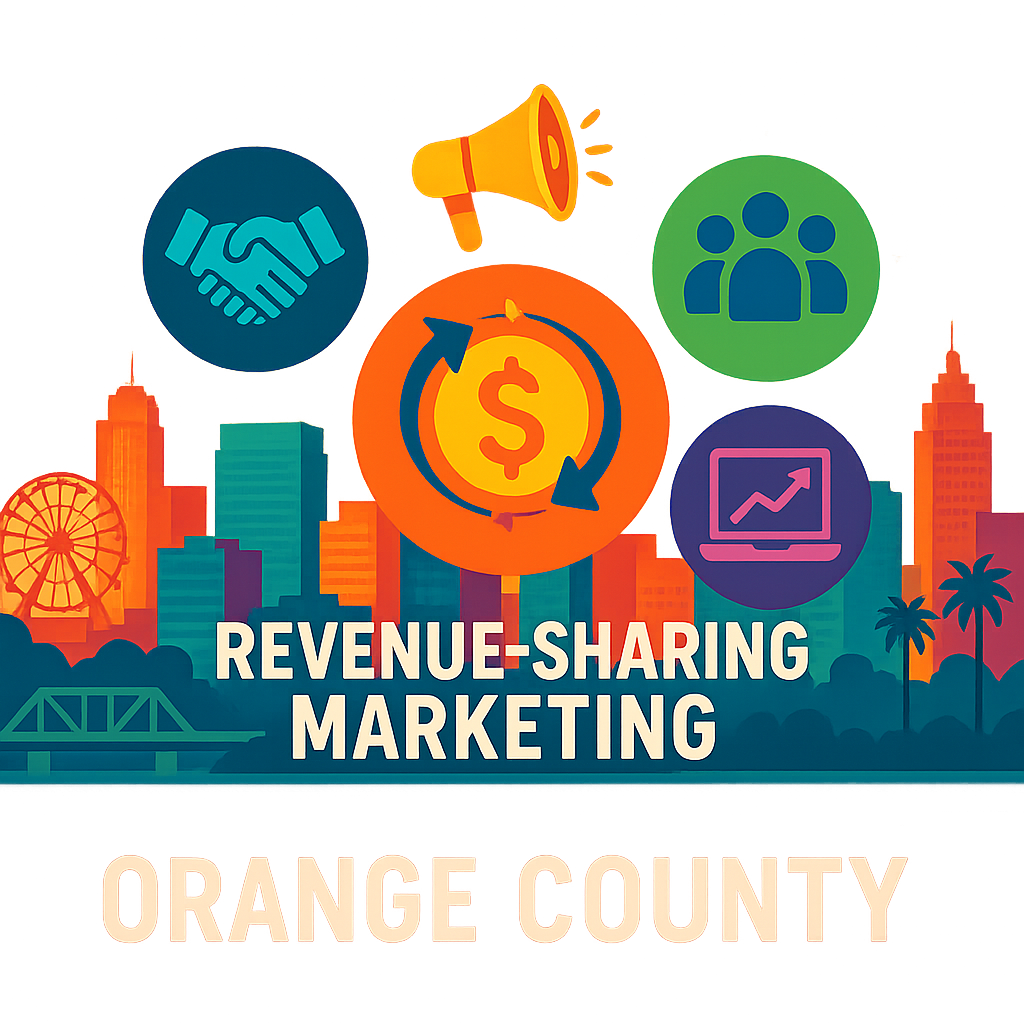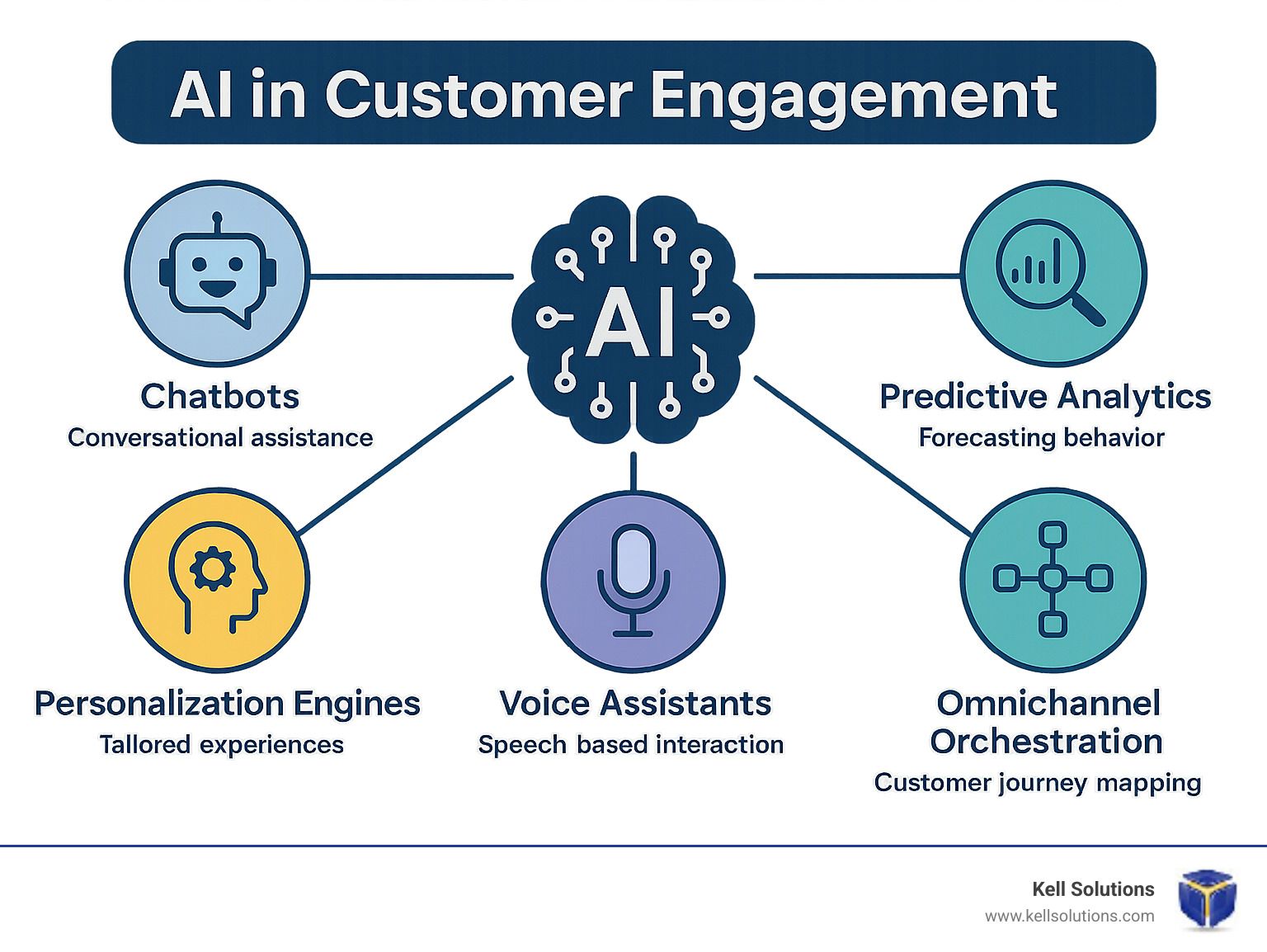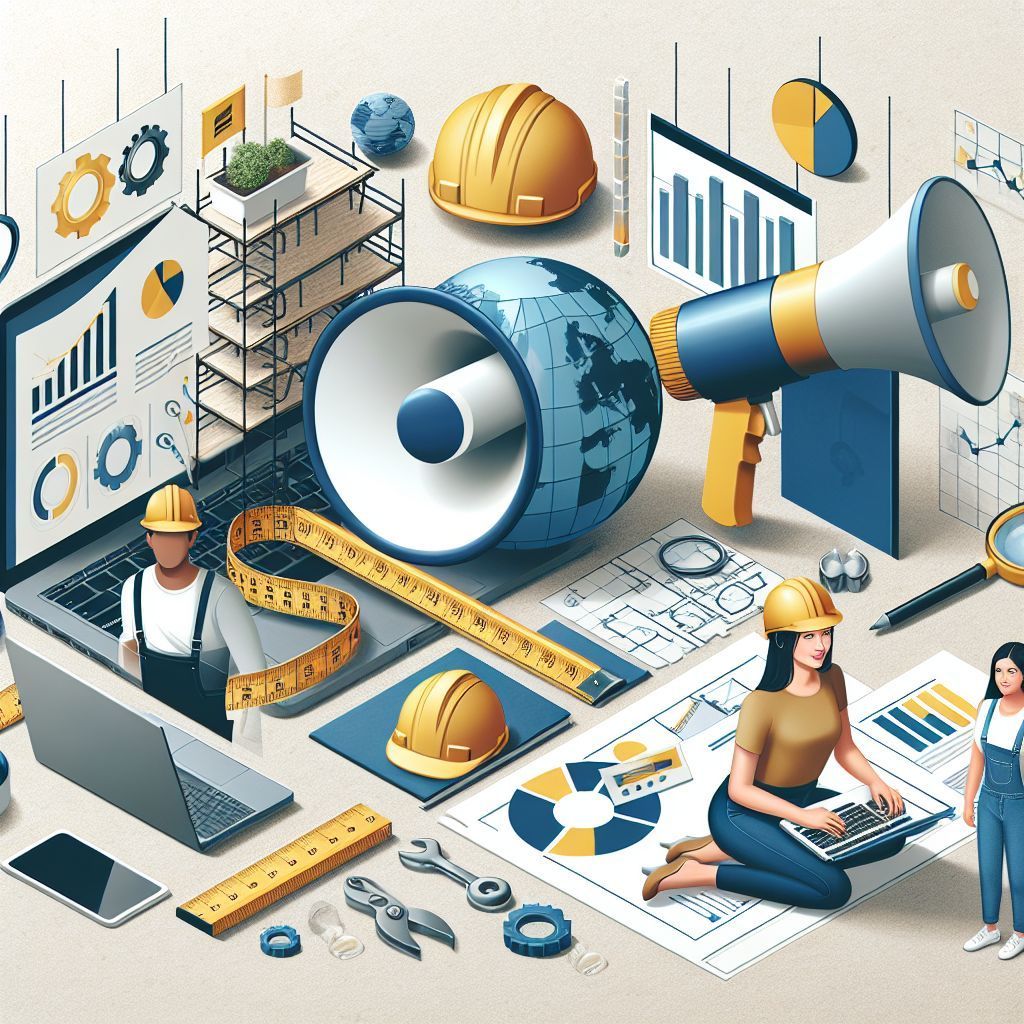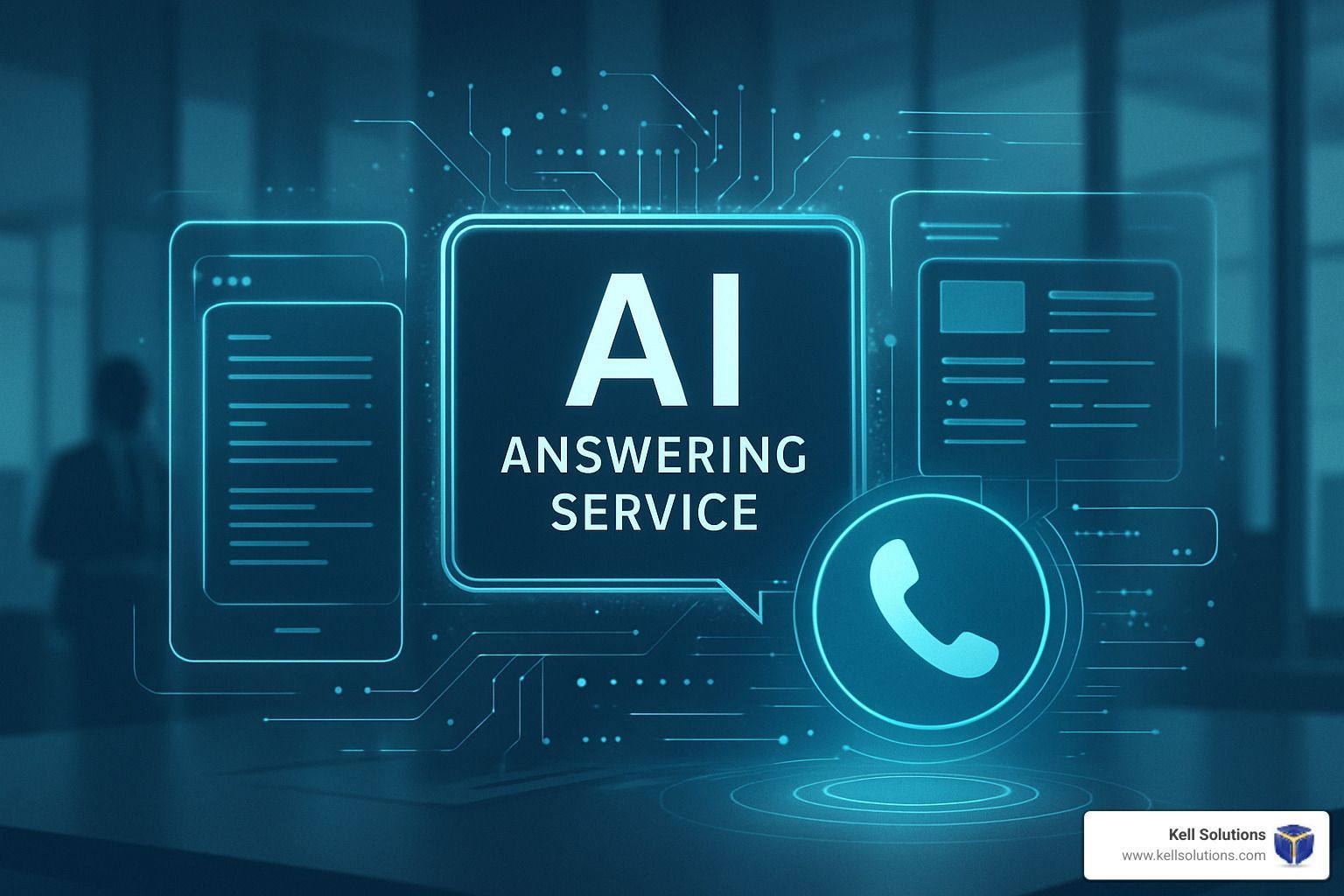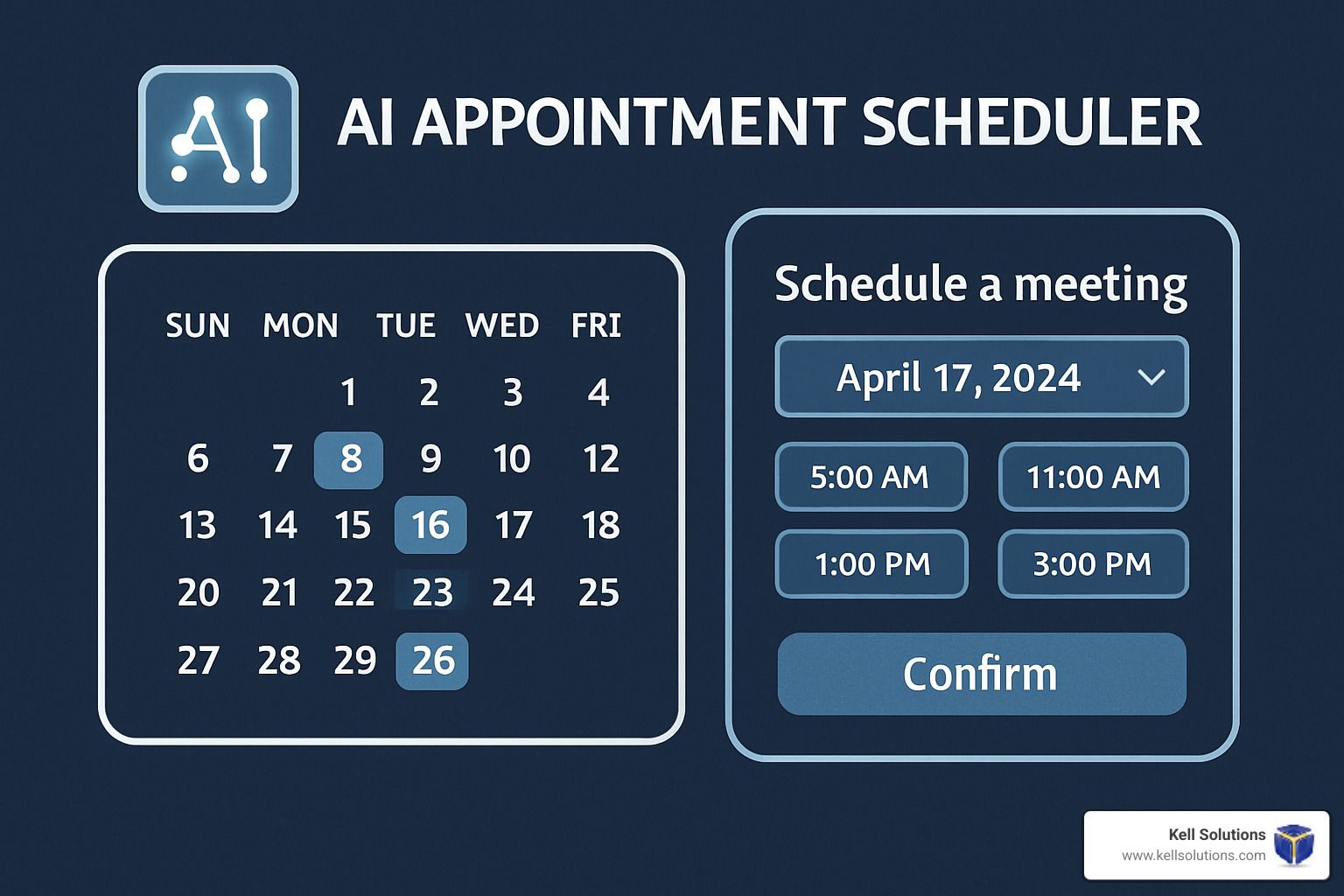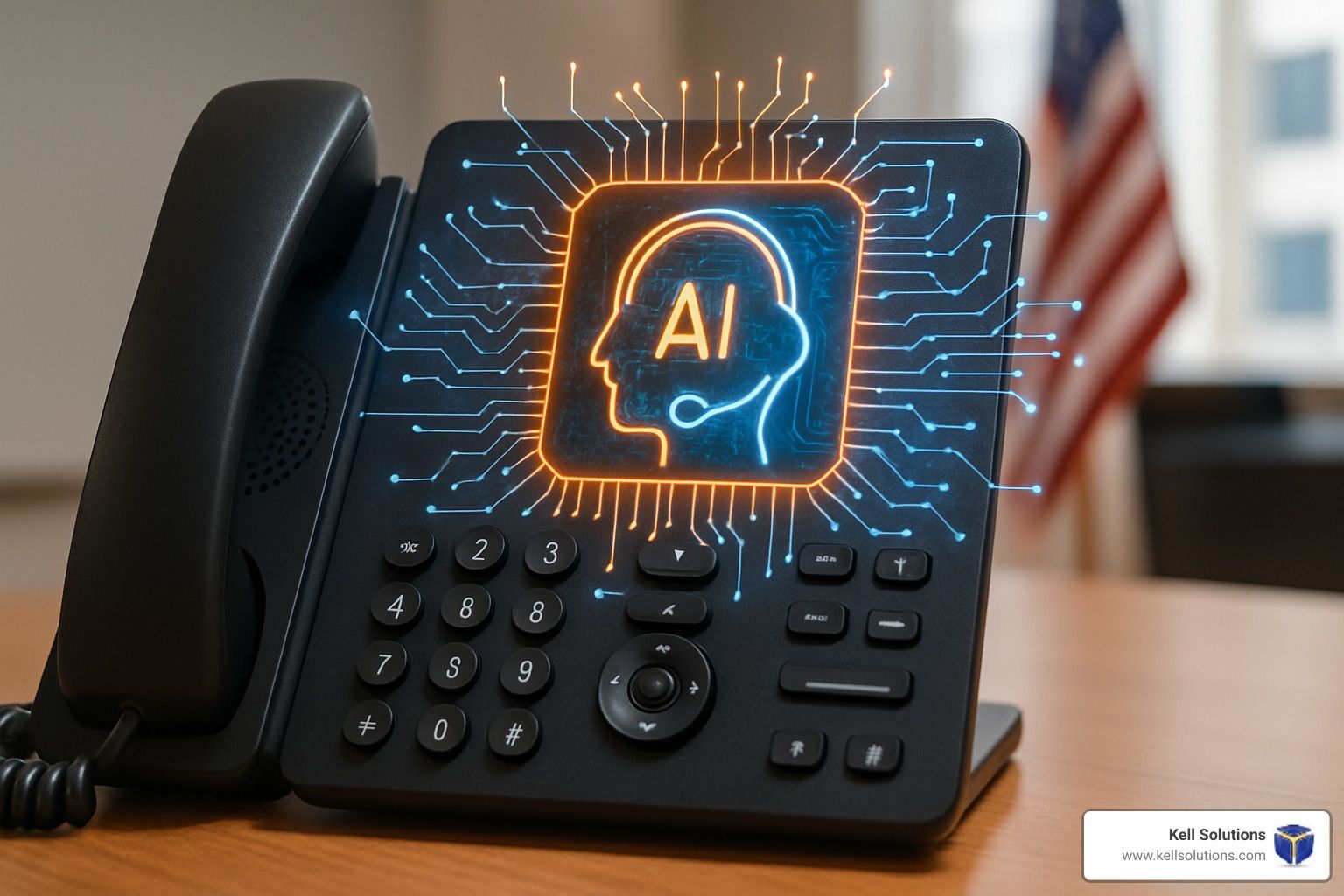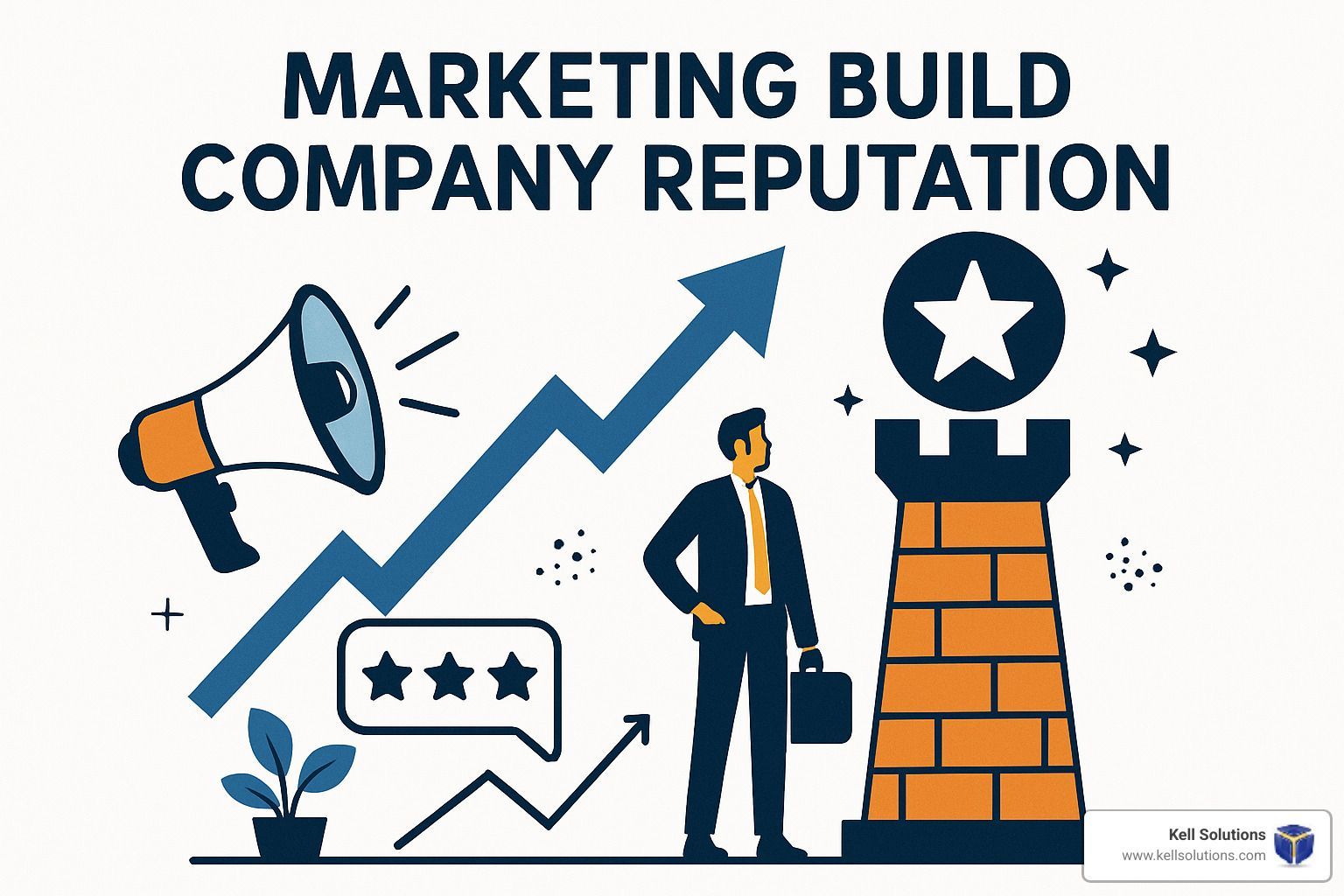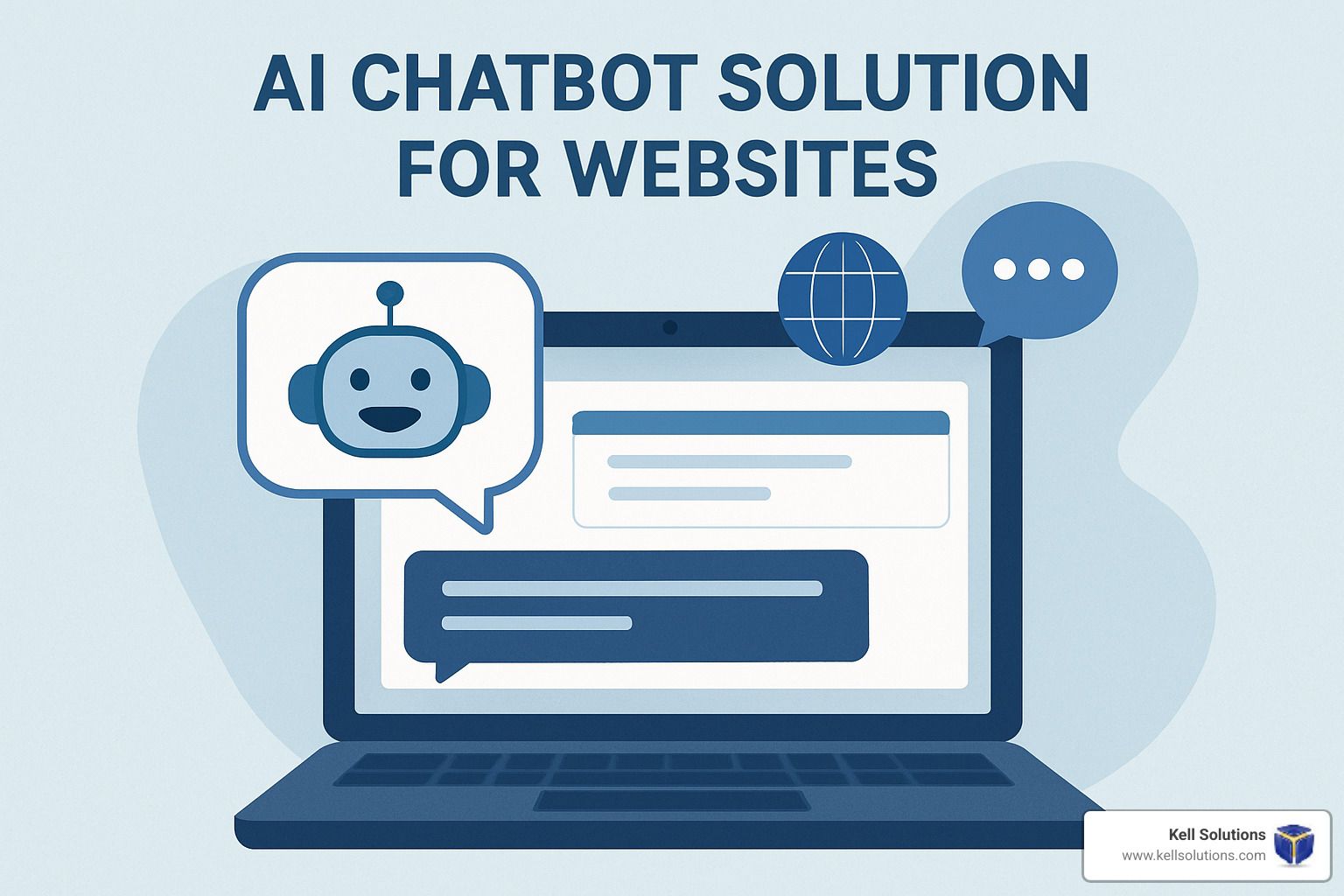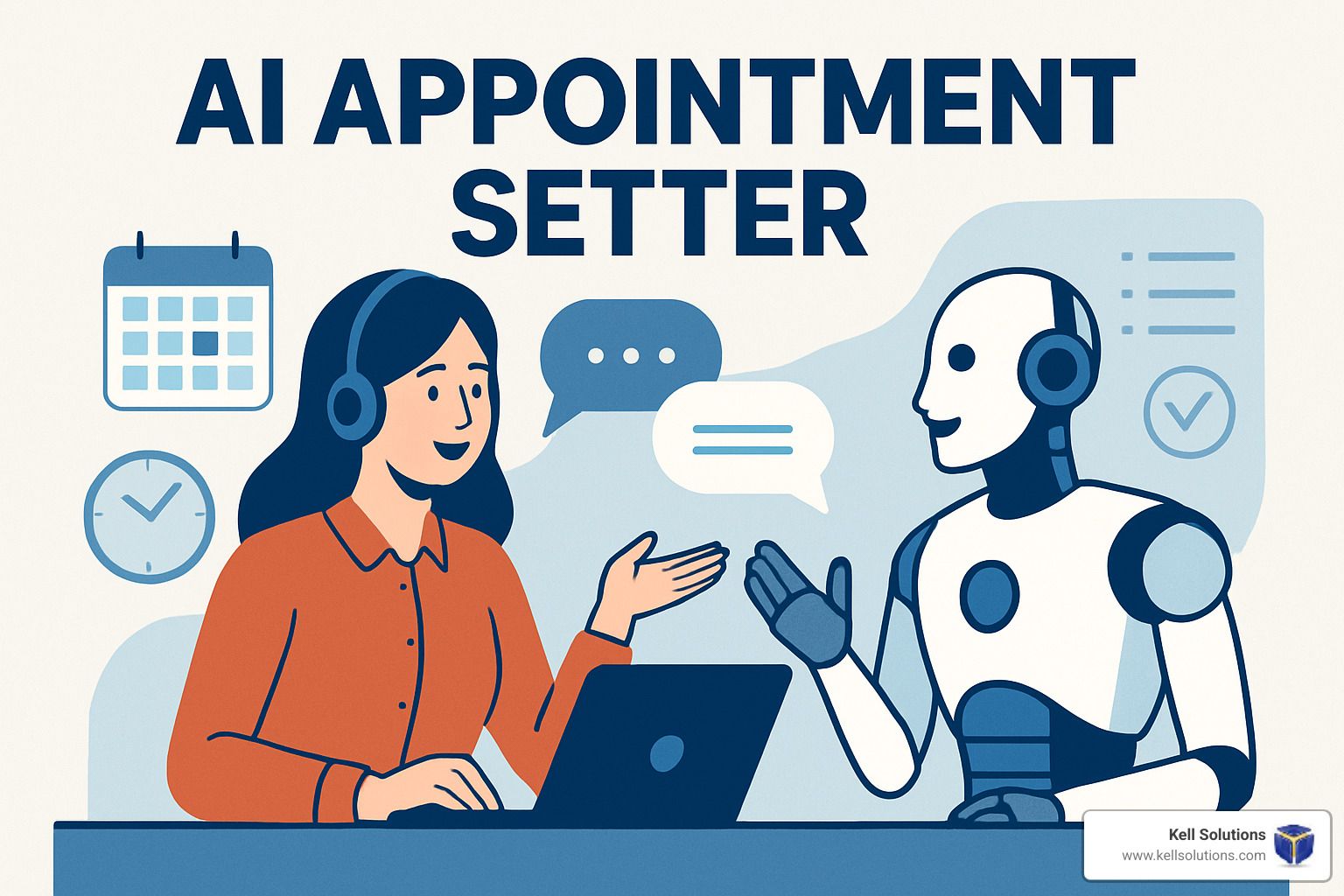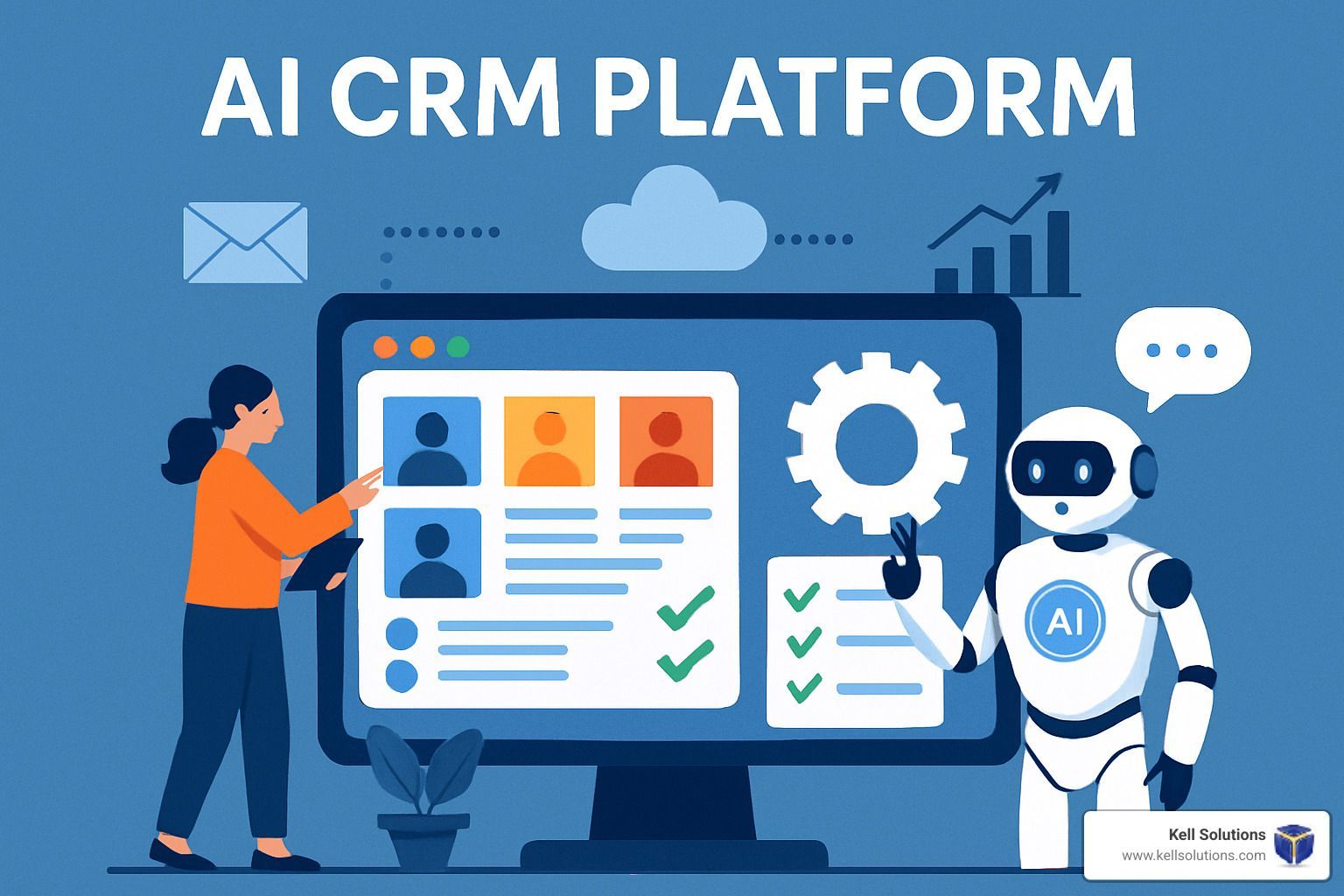Engage Smarter, Not Harder—AI Customer Engagement Solutions Explained
Why Smart Businesses Are Switching to AI-Powered Customer Support
AI-driven customer engagement solutions are platforms that use artificial intelligence to automate and improve customer interactions across voice and digital channels. These solutions include:
• Chatbots and virtual assistants for 24/7 customer support
• Predictive analytics to anticipate customer needs
• Personalized recommendations based on customer behavior
• Real-time sentiment analysis to improve interactions
• Omnichannel integration across web, phone, email, and social media
The numbers tell a compelling story. 83% of customers expect an immediate response when they contact a business, while 73% expect better personalization as technology advances. Meanwhile, businesses using AI-driven customer insights see a 35% increase in sales conversions.
But here's what really matters for busy business owners: 80% of companies using AI-driven customer engagement tools report measurable improvements in both customer satisfaction and operational efficiency. That means fewer missed calls, happier customers, and more revenue—without hiring additional staff.
The shift is happening fast. By 2025, AI-driven customer engagement is set to power 95% of all customer interactions across digital channels. Companies that delay adoption risk losing ground to competitors who can respond instantly, personalize every interaction, and operate around the clock.
I'm Gregg Kell, founder of Kell Web Solutions, and I've spent over 25 years helping small businesses leverage technology for growth. Through developing VoiceGenie AI and working with hundreds of service-based companies, I've seen how ai-driven customer engagement solutions transform businesses from reactive to proactive, turning missed opportunities into consistent revenue streams.

AI-Driven Customer Engagement Solutions 101
Think of AI-driven customer engagement solutions as your business's smartest employee—one who never takes a sick day, remembers every customer conversation, and gets better at their job with each interaction. These platforms represent a fundamental shift from the old "wait and hope" approach to customer service to a proactive, intelligent system that anticipates needs before customers even voice them.
What makes these solutions so powerful is their composability. Unlike rigid, one-size-fits-all systems, modern AI platforms let you build exactly what your business needs. You can mix and match components, integrate with your existing tools through open APIs, and scale up or down as your business grows. It's like having a custom-custom suit instead of something off the rack.
The real magic happens in human-AI collaboration. The AI handles the routine stuff—answering common questions, scheduling appointments, capturing lead information—while your human team focuses on complex problems that require empathy and creative thinking. This partnership covers the entire customer lifecycle, from that first "hello" through years of ongoing relationship building.
The difference becomes crystal clear when you compare traditional methods side by side with AI-driven approaches:
Business hours only
24/7 availability
Generic responses
Personalized interactions
Reactive support
Proactive engagement
Manual data entry
Automated insights
Single channel
Omnichannel integration
High wait times
Instant responses
How AI-Driven Customer Engagement Solutions Differ From Traditional Methods
The gap between traditional customer service and AI-driven customer engagement solutions is like comparing a horse-drawn carriage to a sports car. Both will get your customers where they need to go, but one does it with style, speed, and a whole lot less frustration.
Traditional customer service follows a predictable pattern: customer calls, waits on hold (often listening to that same jazzy elevator music), finally reaches a human agent, and hopefully gets their problem solved—assuming it's during business hours and the agent is having a good day.
AI-driven solutions completely rewrite this script. Response times drop from minutes to seconds. Your business becomes available 24/7, even when you're sleeping or on vacation. Every conversation gets captured and analyzed, creating a knowledge base that grows smarter with each interaction. The AI doesn't need coffee breaks, never calls in sick, and treats every customer like they're the most important person in the world.
But here's what really sets AI apart: it doesn't just respond faster—it responds smarter. Through data-driven insights, AI can spot patterns, predict what customers need, and even detect when someone's getting frustrated before they hang up. It's like giving your business a crystal ball for customer service.
The Customer Expectations Shift
Customer expectations have shifted dramatically, and businesses that don't keep up get left behind. Recent research reveals that 73% of customers expect better personalization as technology advances, while 83% expect an immediate response when they reach out to a business. These aren't wishlist items anymore—they're the bare minimum for staying competitive.
The loyalty-ROI connection is undeniable. Companies with higher customer loyalty scores have delivered 3.5 times more cumulative shareholder return over 10 years. When customers feel valued and understood, they don't just stick around—they become your biggest advocates, referring friends and spending more money.
Here's the wake-up call: 52% of buyers will switch brands when they don't receive personalized engagement. Every generic interaction is a potential customer walking out the door. Modern customers don't just want to be heard—they want to be understood, anticipated, and genuinely cared for. AI makes this level of personalization possible at scale, turning every touchpoint into an opportunity to strengthen the relationship.
Key Technologies & Omnichannel Personalization
Think of modern AI-driven customer engagement solutions like a well-orchestrated team where every player knows their role perfectly. You've got chatbots handling the front lines, predictive analytics working behind the scenes to anticipate what customers need, sentiment analysis reading between the lines to understand emotions, and generative AI crafting personalized responses in real-time.
What makes this really exciting is how these technologies work together seamlessly. A customer might start with a simple question to your chatbot, but the AI is simultaneously analyzing their tone, checking their history, predicting their next likely need, and preparing personalized follow-up suggestions. It's like having a crystal ball for customer service.
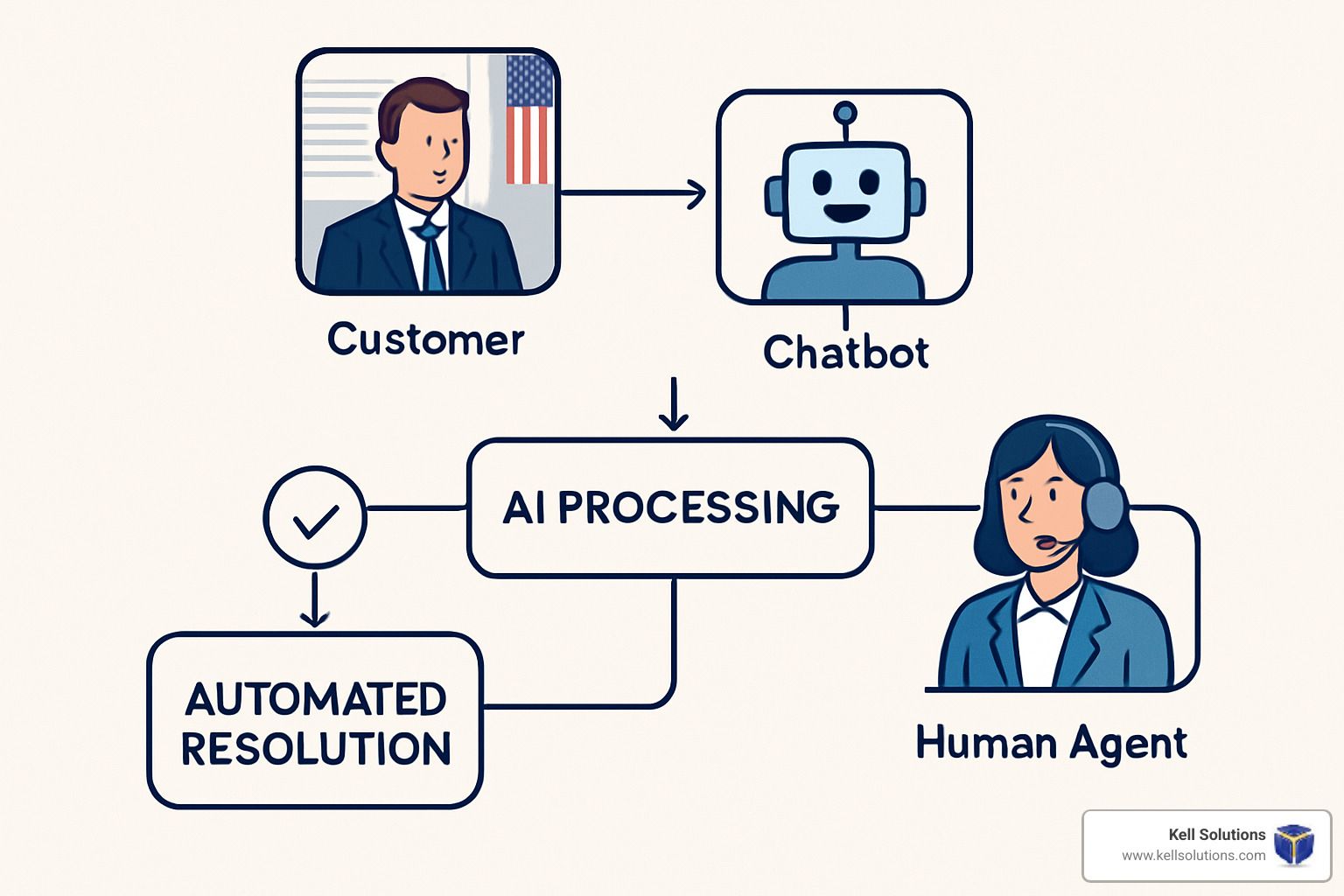
The real magic happens when these technologies span all your customer touchpoints. Whether someone calls your business, sends an email, starts a chat, or reaches out on social media, they get the same intelligent, personalized experience. No more "Can you repeat what you told the last person?" conversations.
The five game-changing technologies leading this change are Natural Language Processing that helps AI understand human conversation naturally, Predictive Analytics that anticipates customer needs before they're expressed, Sentiment Analysis that picks up on emotional cues in communications, Machine Learning that gets smarter with every interaction, and Generative AI that creates personalized responses on the spot.
Conversational AI Frontline: Chatbots & Voice Agents
Remember when chatbots could barely handle "What are your hours?" without getting confused? Those days are long gone. Today's conversational AI understands context, picks up on subtle hints, and can steer complex conversations with impressive skill.
The breakthrough technology here is intent recognition. When a frustrated customer says "This thing isn't working again," the AI doesn't just hear words—it understands the customer is likely experiencing a recurring technical issue and may need escalated support or a replacement. It's like having a customer service agent who never forgets a detail and always knows exactly what you mean.
The numbers speak for themselves: 77% of customers say chatbots have improved their perception of a brand, while 64% of businesses report that AI-driven chatbots help them provide better customer support. But here's where it gets really interesting—voice AI is taking this to the next level.
Voice agents can handle phone calls with the same sophistication as text chatbots, but they add something special. They can detect when someone sounds stressed, handle interruptions gracefully, and understand regional accents that might trip up traditional systems. For businesses that rely on phone interactions, AI Customer Engagement Software represents a complete change in how customer service works.
Predictive & Real-Time Analytics for Proactive Service
Here's where AI gets almost spooky good. Instead of waiting for problems to happen, predictive analytics spots patterns that suggest trouble ahead. It's like having a weather forecast for customer satisfaction.
Imagine knowing that a customer who usually reorders supplies every month is now 10 days overdue. The AI can automatically send a friendly reminder or a special offer before the customer even realizes they're running low. Or picture this: the system notices usage patterns that typically precede cancellations and triggers a retention workflow with personalized incentives.
Scientific research on predictive analytics shows that businesses using these insights are twice as likely to exceed their revenue goals. That's because they're not just solving problems—they're preventing them.
Real-time analytics add another layer of responsiveness. If someone's browsing your website and seems stuck on a pricing page, the AI can trigger a chat invitation with helpful information. If a phone customer's voice suggests they're getting frustrated, the system can immediately alert a supervisor or suggest specific de-escalation techniques to the agent handling the call.
Omnichannel Consistency Across Touchpoints
True omnichannel engagement isn't just about being everywhere—it's about being consistently helpful everywhere. When a customer starts a conversation on your website chat, continues it via email, and finishes with a phone call, they shouldn't have to repeat their story three times.
The foundation is what we call a single view of the customer—a complete picture that includes every interaction, preference, and piece of history. Whether they're talking to a chatbot at midnight or calling during business hours, the AI knows who they are, what they've tried, and what they're likely to need next.
API integrations make this seamless experience possible by connecting your engagement platform with existing business systems. Customer data flows naturally between your CRM, help desk, e-commerce platform, and AI tools. No more data silos or disconnected experiences.
Brand voice consistency matters just as much as data consistency. Whether customers interact with your chatbot, voice agent, or human team members, they should hear the same personality and receive the same quality of care. Modern AI platforms can be trained on your specific brand guidelines, ensuring that every interaction feels authentically "you"—even when it's powered by artificial intelligence.
Measuring Value: Benefits, Metrics & Real-World Success
When businesses invest in AI-driven customer engagement solutions, they want to see real results—not just fancy technology. The good news? The numbers speak for themselves, and they're telling a very compelling story about return on investment.
Let me share some eye-opening examples that show just how powerful these solutions can be. Take the travel industry, where loveholidays managed to save a staggering £3 million ($3.8 million) per year by implementing AI-powered customer engagement. Their AI agents handle routine travel inquiries around the clock, provide instant responses in multiple languages, and free up human agents to focus on complex bookings and building genuine relationships with customers.
Another success story comes from a business process outsourcing provider that saw remarkable results after implementing AI solutions. They automated up to 40% of customer interactions and experienced a 40% reduction in escalations. Here's what's really interesting: the AI didn't just handle more interactions—it handled them so well that fewer issues needed to be passed to human agents.
These aren't isolated success stories. Across industries, businesses are finding that AI-driven customer engagement delivers measurable improvements that directly impact their bottom line. The technology has matured to the point where ROI is predictable and substantial.
Tangible Benefits Businesses Report
The benefits of implementing AI-driven customer engagement solutions go far beyond simple automation. When businesses start tracking the right metrics, they find improvements they didn't even expect.
Sales conversions see dramatic improvements. Businesses using AI-driven customer insights report a 35% increase in sales conversions. Why? Because AI can spot buying signals that humans might miss and respond to them instantly. When a potential customer shows interest at 2 AM on a Sunday, AI is there to nurture that lead while your competition sleeps.
Customer satisfaction improvements are equally impressive. 80% of companies using AI-driven customer engagement tools report measurable improvements in both customer satisfaction and operational efficiency. Customers love getting instant, accurate answers without waiting on hold. They appreciate consistent service quality regardless of when they contact your business.
The operational efficiency gains often surprise business owners. Companies consistently report 40% reductions in escalations when AI handles initial customer interactions. The AI doesn't just deflect calls—it gathers comprehensive information and resolves simple issues completely, ensuring that when human agents do get involved, they have everything they need to solve problems quickly.
Here's something that might surprise you: employee satisfaction actually improves with AI implementation. Three-quarters of customer service professionals say AI has helped them reduce their response time while freeing them from repetitive tasks. Instead of answering the same basic questions all day, they can focus on complex problem-solving and relationship building—the parts of their job they actually enjoy.
Retention rates improve significantly too. When customers receive consistent, high-quality service around the clock, they stick around longer. They also spend more and refer more business to companies that make their lives easier.
KPIs & ROI Framework
Measuring the success of AI-driven customer engagement requires looking beyond traditional customer service metrics. While response time and customer satisfaction remain important, AI enables new insights that provide a much clearer picture of business impact.
The essential metrics to track include response time—how quickly customers get their first answer—and resolution rate, which shows the percentage of issues resolved without human intervention. Customer Satisfaction (CSAT) scores provide direct feedback on interaction quality, while Net Promoter Score (NPS) reveals whether customers would recommend your business to others.
Churn rate becomes particularly important because AI can often identify at-risk customers before they decide to leave. Average Handle Time (AHT) shows the total time spent resolving customer issues, while first contact resolution measures how often problems get solved in the first interaction.
The real magic happens when you connect these operational metrics to business outcomes. Improved response times typically drive higher conversion rates. Better first contact resolution reduces operational costs while boosting customer lifetime value. Reduced churn directly impacts recurring revenue.
Smart businesses create dashboards that show both the operational improvements and the financial impact. When you can see that faster response times led to a 15% increase in lead conversion, the ROI becomes crystal clear.
More info about AI Customer Service Guide provides detailed frameworks for measuring AI impact across different business models and industries. The key is choosing metrics that align with your specific business goals and tracking them consistently over time.
From Pilot to Scale: Implementation, Ethics & Future Trends
Rolling out AI-driven customer engagement solutions isn't like installing a new phone system. It's more like teaching your business a new language—one that speaks directly to your customers' needs while changing how your team works.
The smartest companies don't dive headfirst into AI. They start with a strategic pilot, prove the value, then scale systematically. Think of it as testing the waters before you swim across the lake.
Your data needs to be ready for AI to work its magic. Clean, organized customer information feeds better AI responses. Integration challenges are real—your new AI needs to play nicely with your existing CRM, phone systems, and other tools. But with proper planning, these problems become stepping stones rather than roadblocks.
Governance frameworks keep everything running smoothly while protecting both your business and your customers. This means establishing clear rules about data usage, privacy protection, and maintaining compliance with regulations like GDPR and CCPA.
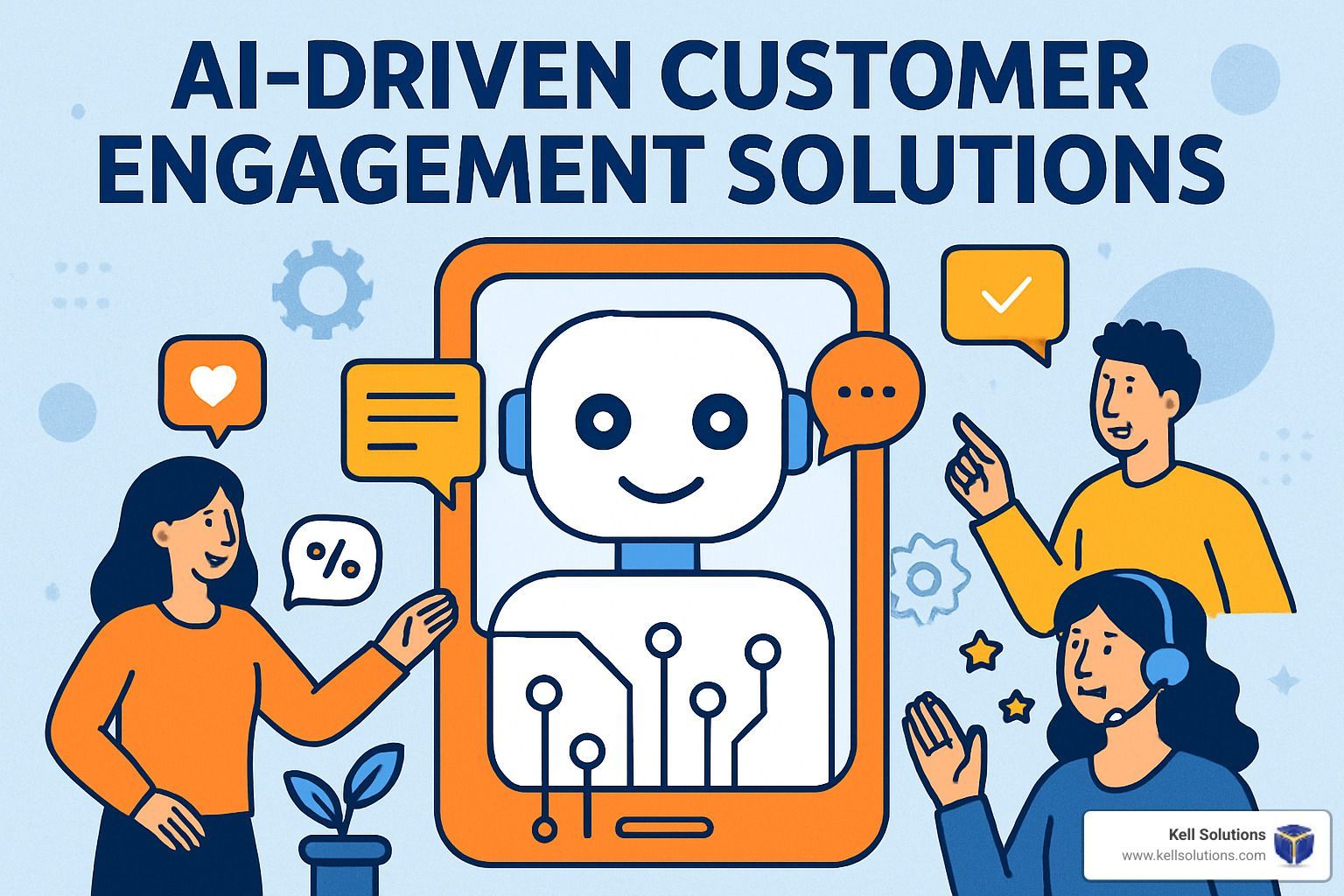
7-Step Implementation Roadmap
Getting AI-driven customer engagement right requires a methodical approach. Here's the roadmap that consistently delivers success:
Strategy Audit comes first. Take a hard look at your current customer interactions. Where do customers get frustrated? When do you lose leads? What questions get asked repeatedly? These pain points become your AI's first assignments.
Tool Selection matters more than you might think. The flashiest AI isn't always the best fit. Look for solutions that integrate smoothly with your existing systems and can grow with your business. Consider how easy it will be to customize responses and add new capabilities over time.
Pilot Program is where the rubber meets the road. Pick one specific challenge—maybe after-hours calls or appointment booking—and let AI tackle just that. This focused approach lets you measure real results without overwhelming your team or customers.
Team Training bridges the gap between old and new ways of working. Your staff needs to understand both the technology and how their roles will evolve. This isn't about replacement—it's about improvement. Train administrators on the technical side and help customer-facing staff learn to work alongside their new AI teammates.
Iterate and Improve based on what you learn. AI gets smarter with feedback, so establish regular review cycles from day one. What's working well? What needs adjustment? Customer feedback and team observations guide these improvements.
Scale Gradually by adding new channels and capabilities one at a time. Once your AI masters phone calls, maybe add chat support. Once it handles basic inquiries, expand to appointment scheduling. Steady growth beats trying to do everything at once.
Optimize Continuously because AI-driven engagement is never truly "finished." Customer needs change, your business evolves, and AI capabilities improve. Regular optimization keeps your system sharp and effective.
Balancing Automation With the Human Touch
Here's where many businesses get it wrong: they think AI means replacing humans entirely. That's like thinking a calculator replaces mathematicians. The real power comes from combining AI efficiency with human empathy and creativity.
AI handles the routine stuff brilliantly—answering common questions, scheduling appointments, capturing lead information. Your human team focuses on complex problem-solving, building relationships, and handling sensitive situations that require genuine empathy.
The handoff design makes or breaks this collaboration. When AI needs to transfer a customer to a human agent, that transition should feel seamless. The customer shouldn't have to repeat their story or feel like they're starting over. Good AI provides complete context to the human agent, including conversation history and customer preferences.
Agent assist features turn your human team into superheroes. AI can suggest responses, surface relevant customer history, and even draft personalized follow-up messages that agents can review and send. It's like having a really smart research assistant who never gets tired.
Upskilling your team becomes crucial as AI handles more routine tasks. Your agents can focus on higher-value activities like relationship building, complex problem-solving, and strategic customer success initiatives. Many businesses find their customer service roles become more engaging and rewarding with AI support.
Challenges & Ethical Considerations
With AI handling sensitive customer interactions, ethical considerations move from nice-to-have to absolutely essential. Your customers trust you with their personal information, and that trust extends to how your AI uses their data.
Privacy protection isn't just about compliance—it's about maintaining customer confidence. When AI analyzes customer conversations to improve responses, customers need to know their information stays secure. Clear data handling policies and robust security measures protect both your customers and your business reputation.
Transparency builds stronger relationships than clever hiding ever could. Customers generally respond well to knowing when they're talking to AI, especially when that AI delivers better, faster service. You don't need to overwhelm them with technical details, but honest communication about AI involvement creates trust.
Algorithmic bias requires ongoing attention because AI learns from data, and data can contain hidden biases. Regular audits help identify and correct these issues before they impact customer experiences. Diverse training data and careful monitoring ensure your AI treats all customers fairly.
Accountability means having humans ultimately responsible for AI decisions. While AI can handle routine interactions autonomously, important decisions should have human oversight. This creates confidence in your system while maintaining the flexibility to handle unique situations.
Scientific research on customer expectations reveals that customers actually prefer AI-powered service when it's implemented transparently and delivers genuine value. The key is focusing on customer benefit rather than just operational efficiency.
What's Next for AI-Driven Customer Engagement Solutions
The future of AI-driven customer engagement solutions is arriving faster than most people realize, and it's more exciting than science fiction.
Hyper-personalization will move beyond knowing a customer's name and purchase history. AI will adapt in real-time to communication preferences, emotional state, and immediate context. Imagine AI that adjusts its communication style based on whether a customer seems rushed, frustrated, or just browsing casually.
Multimodal AI will let customers switch seamlessly between text, voice, and visual interactions within the same conversation. Start a support chat on your phone, switch to voice when you get in the car, and share photos when you get to your computer—all without losing context or starting over.
No-code AI agent builders will democratize AI creation. Business owners will customize AI behaviors without needing technical expertise. Want your AI to handle insurance quotes differently than appointment bookings? Simple drag-and-drop interfaces will make these customizations as easy as building a website.
Emotional AI represents perhaps the most intriguing development. Future systems will detect subtle emotional cues in voice tone, word choice, and conversation patterns. They'll respond with appropriate empathy, escalate when customers need human support, and even proactively reach out when they sense frustration or confusion.
Digital twins will create virtual models of individual customers, enabling AI to predict needs before customers even express them. Your AI might notice that a customer typically reorders supplies every six weeks and proactively send a reminder with a special offer at the five-week mark.
Looking even further ahead, quantum computing may revolutionize AI's ability to process complex customer data in real-time, enabling insights and personalization that seem almost magical today. The future of customer engagement isn't just automated—it's anticipatory, empathetic, and genuinely helpful.
Frequently Asked Questions
How can small and medium-sized businesses afford AI engagement?
Here's the good news: you don't need a Fortune 500 budget to transform your customer engagement. The AI revolution has made sophisticated tools surprisingly accessible, and the numbers prove it pays for itself quickly.
Nearly half (47%) of customers want to receive personalized deals from AI, which means you're not just spending money on technology—you're investing in immediate revenue opportunities. Many of our clients at Kell Solutions see their AI-driven customer engagement solutions pay for themselves within the first few months through captured leads that would have otherwise been lost.
The secret is starting smart, not big. Modern AI platforms offer flexible pricing that grows with your business. You can begin with simple after-hours call handling or appointment booking—the kind of basic functions that deliver instant value without requiring a PhD in computer science to set up.
Think about it this way: if you're missing even one call per day because you're busy with other customers, that's potentially thousands of dollars in lost revenue each month. A voice AI agent that never misses a call and works 24/7 suddenly looks like a bargain, not an expense.
Will AI replace human agents entirely?
This is probably the most common worry I hear, and I get it. But here's the reality: 84% of customer service professionals believe AI is crucial to meeting customer expectations, and they're not worried about being replaced—they're excited about being empowered.
Think of AI as the ultimate team player, not a replacement. Your AI handles the routine stuff—answering FAQs, booking appointments, taking messages at 2 AM—while your human team focuses on what they do best: building relationships, solving complex problems, and providing the kind of personal touch that makes customers feel truly valued.
I've worked with hundreds of businesses over the past 20+ years, and I've never seen AI eliminate jobs. Instead, it transforms them. Your receptionist becomes a customer success specialist. Your service team becomes problem-solving experts. Everyone gets to do more interesting, meaningful work because the AI handles the repetitive tasks.
The magic happens when humans and AI work together. The AI gathers all the information, understands the customer's history, and then seamlessly hands off to a human when needed. It's like having a super-efficient assistant who never forgets a detail and always knows exactly what's going on.
Which metrics prove AI engagement ROI fastest?
If you're looking for quick wins to justify your investment, response time is your best friend. 83% of customers expect immediate responses, and AI delivers them instantly. You'll literally see customer satisfaction scores improve within days of implementation.
The math gets really interesting when you look at cost per interaction. Before AI, every customer inquiry costs you time and money—whether it's staff wages, phone bills, or opportunity costs from missed calls. After AI, routine inquiries cost pennies to handle automatically. Many businesses see 30-50% reductions in cost per interaction within their first quarter.
But here's where it gets exciting for business owners: lead capture and conversion rates. If you've ever wondered how many potential customers called after hours or hung up because they couldn't get through, AI gives you those numbers—and captures those leads. 91% of consumers are more likely to shop with brands that provide relevant recommendations and offers, so AI-powered personalization starts driving sales improvements almost immediately.
The beauty of modern analytics is that you can track everything in real-time. You'll know exactly how many calls your AI answered, how many appointments it booked, and how much revenue it generated. No guessing, no hoping—just clear, measurable results that make the ROI conversation easy.
Conclusion
The journey from traditional customer service to AI-driven customer engagement solutions represents more than just a technology upgrade—it's a complete reimagining of how businesses connect with their customers. We're witnessing a change that separates industry leaders from those who get left behind.
The numbers don't lie. Businesses embracing AI-driven customer engagement consistently report higher satisfaction scores, reduced operational costs, and impressive revenue growth. But beyond the metrics lies something even more valuable: the ability to build genuine relationships with customers at scale.
What excites me most after two decades in this industry is watching small businesses open up capabilities that were once reserved for enterprise giants. AI-driven customer engagement solutions have democratized world-class customer service, making it possible for any business to provide 24/7 support, instant responses, and personalized experiences.
At Kell Solutions, we've had the privilege of seeing this change firsthand. Our VoiceGenie AI platform embodies everything we've discussed in this guide—seamless collaboration between AI and human teams, round-the-clock availability, and intelligent engagement that turns every interaction into an opportunity.
The businesses thriving today aren't necessarily the biggest or the oldest. They're the ones that recognized customer expectations have fundamentally shifted and adapted accordingly. While their competitors are still playing catch-up with basic responsiveness, these forward-thinking companies are building lasting competitive advantages through AI-powered customer engagement.
The choice facing every business owner is straightforward: lead this change or watch competitors pull ahead. The companies investing in artificial intelligence services now are establishing advantages that compound over time. Every day you wait is another day of missed calls, lost leads, and disappointed customers going to businesses that never sleep.
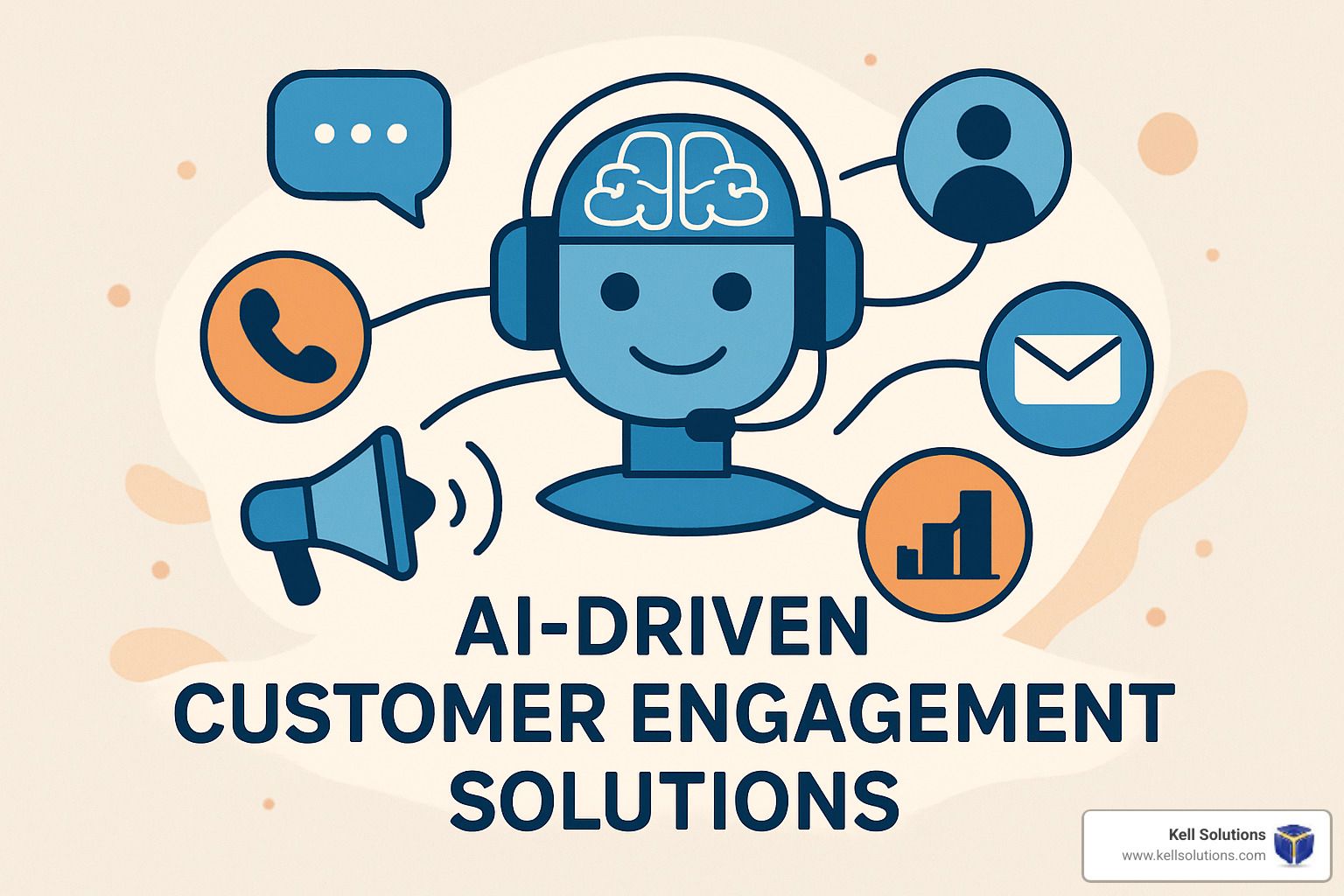
Your customers are already expecting AI-powered service, whether they realize it or not. They want instant responses, personalized attention, and solutions that work around their schedules, not yours. The question isn't whether this shift will happen—it's whether you'll be ready when it does.
Ready to find how AI-driven customer engagement solutions can transform your business? Request a free demo and see how VoiceGenie AI can help you engage smarter, respond faster, and never miss another opportunity.
📚 About the Author
Gregg Kell is a seasoned digital marketing strategist and founder of Kell Web Solutions, Inc., helping professional service firms grow through innovative AI-powered solutions like VoiceGenie AI. With over 20 years of experience in web development, lead generation, and business automation, Gregg is passionate about helping small businesses maximize growth and profitability through cutting-edge technologies.
When he's not helping businesses boost their bottom line, Gregg enjoys life by the beach in Laguna Beach, California, with his wife Debbie, celebrating over 40 years of marriage and entrepreneurial trips.
👉 Explore More from Gregg:


Orange County HVAC Google AI Overview Domination: 7 Proven Strategies to Capture Featured AI Results





